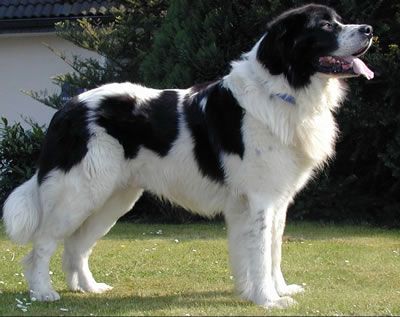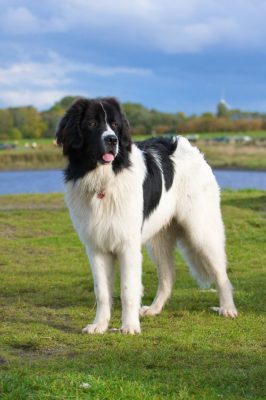Landseer
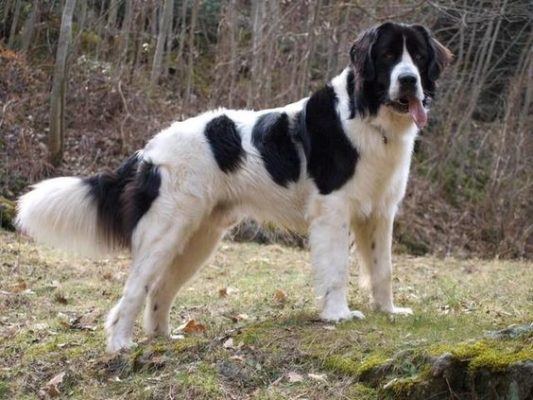
Landseer is kind, loyal to the owner and his family, an excellent swimmer and companion in fishing and other active pastimes. Education requires a lot of patience on the owner’s part because the Landseer dog is a bit stubborn. They get along well with other animals in the same area and play with children. They can perform the role of nanny well because they have a unique affectionate attitude to children.
Table of Contents
Breed Information
| Another Name | Landseer Newfoundland |
| Origin | Canada |
| Height | Males 72-80 cm Females 67-72 cm |
| Weight | Males 59-68 kg Females 45-54 kg |
| Fur | Long, straight, soft, thick with a good undercoat |
| Color | Pure white as the primary color, with distinct black spots on the body and croup |
| Lifespan | 10-11 years |
| FCI Classification | Pinscher and Schnauzer – Molossoid and Swiss Mountain and Cattledogs |
| Group | Watchdogs |
| Price | $1800-2200 |
Breed Photos
Origin History
There is no reliable version of the origin of this breed. It is believed that the Landseer dog was brought from England to the islands on the northeastern shores of America. From there, they returned to Europe crossed with local dogs.
The breed is very similar to the Newfoundland, and they were often confused. The Landseer got its name after Edwin Landseer, who painted these dogs in his paintings. The dogs are also known in the literature, thanks to Byron.
In evolution, the dogs were often crossed with others, such as Saint Bernards and Pyrenean Mountain Dogs. The breed was officially recognized in 1960. But in some countries, the dog is still considered a variety of Newfoundland.
Appearance
The tall, strong, muscular Landseer has long limbs and a well-developed musculature. Despite its large size, the build is harmonious and well-proportioned, and the Landseer moves gracefully and smoothly. The body is a slightly elongated shape. The paws are muscular and rounded, like a cat’s.
The hair is shorter on the head than on the body. The coat is usually long; there is an excellent dense undercoat. The color can be solid white with black spots.
There is a sexual dimorphism: the height of the male usually ranges from 72 to 80 cm, the height of the bitch is 67-72 cm. The weight of the male is 59-68 kg, the female 45-54 kg.
Character
Landseer is kind, loyal to the owner and his family, an excellent swimmer and companion in fishing and other active pastimes. Education requires a lot of patience on the owner’s part because the Landseer dog is a bit stubborn.
They get along well with other animals in the same area and play with children. They can perform the role of nanny well because they have a unique affectionate attitude to children. Landseer will be a good friend and companion at leisure.
They feel their owner’s moods well, love praise, affection, and warmth. They should not be left alone for a long time because they will become angry and have a terrible temper. Landseers need frequent walks and plenty of exercises to release excess energy. The Landseer dog is a late maturity, and his large size can often be deceptive.
Care
It will be challenging to live with the Landseer in the apartment because their large size requires a lot of space, and in the period of molting, they tend to drop a lot of hair, which can be a nuisance indoors.
The best home for a dog would be an enclosure on private property. It is okay if there is a swimming pool on the summertime property, as landers are good swimmers and love to play by the water.
For the coat to have a good look, it should be regularly brushed with a special brush. Its length can cause the formation of tangles.
Twice a year, the dog molts; more attention should be paid to the coat because they shed it in huge quantities during this period. During growth and maturity, you need to spend a lot of time on active exercise, frequent walks, and training. Once a week, check the condition of the eyes, ears, and teeth.
Training
When trained, the Landseer is obedient and attentive. They are easy to prepare because they do not tend to show leadership, but you can’t raise them and be honest guards and protectors because their primary purpose is to be friends.
When training, you should emphasize games on development, memory, and attention. From a young age, teach him that you must not harm the house; you must obey elementary commands and not eat from the ground.
Common Diseases
Landseers are in good health and have a robust immune system, and it is almost uncommon for them to have genetic diseases. However, hip dysplasia, otitis media, and gastrointestinal disease can still occur with improper nutrition.
Nutrition
Landseer likes to eat a lot, especially during growth. One thing to keep in mind is that they should not overeat, so you should consult your doctor about the amount of food.
The food should be varied and nutritious. Ensure that the pet has constant access to water. Do not give your dog fatty meat, sweets, smoked foods, potatoes, bones from meat.
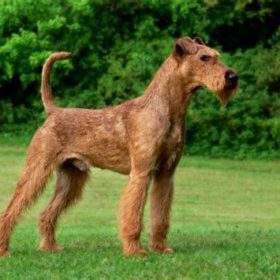 Irish Terrier
Irish Terrier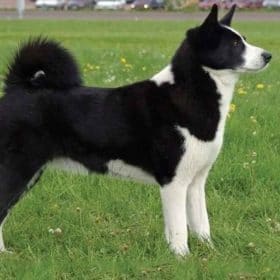 Karelian Bear Dog
Karelian Bear Dog Šarplaninac
Šarplaninac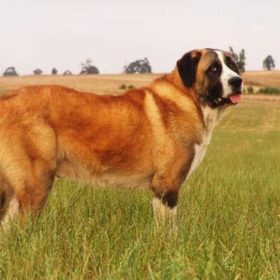 Rafeiro do Alentejo
Rafeiro do Alentejo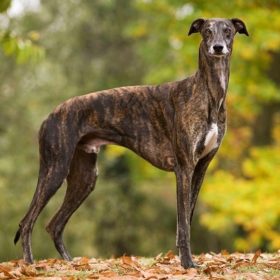 Magyar Agár
Magyar Agár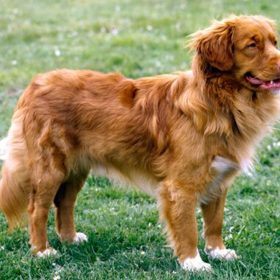 Nova Scotia Duck Tolling Retriever
Nova Scotia Duck Tolling Retriever